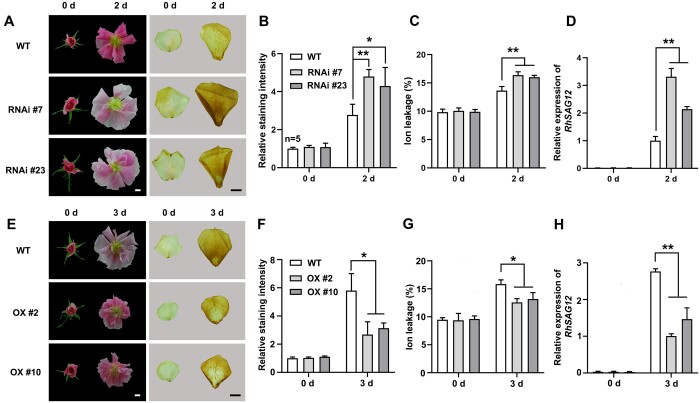Figure 4.
RhBBX28 modulates dark-induced petal senescence and H2O2 accumulation. A, Flower phenotypes (left) and H2O2 accumulation (right) in petals of RhBBX28-RNAi and WT plants after 2 days in DD conditions. B, Relative staining intensity of H2O2 accumulation (n = 5 for WT in 0 days, n = 4 for the rest), (C) ion leakage (n = 4), and (D) relative expression of RhSAG12 (n = 3) in petals of RhBBX28-RNAi and WT plants in DD condition. For DD treatments, flowers were initially grown under LD conditions and then transferred to DD conditions. Experiments were performed independently 3 times, with similar results. Mean values ± sd are shown. E, Flower phenotypes (left) and H2O2 accumulation (right) in petals of RhBBX28-OX and WT plants after 3 days in DD conditions. Experiments were performed independently 3 times, with similar results. F, Relative staining intensity of H2O2 accumulation (n = 3), (G) ion leakage (n = 4 for WT and OX #2 in 0 days, and OX #10 in 3 days, n = 3 for the rest), (H) and relative expression of RhSAG12 (n = 3) in petals of RhBBX28-OX and WT plants in DD conditions. H2O2 levels were determined by staining with DAB. RhUBI2 was used as an internal control. Experiments were performed independently 3 times, with similar results. Mean values ± sd are shown. Asterisks represent statistically significant differences (*P < 0.05; **P < 0.01), as determined by Student’s t test. Scale bars, 1 cm.

